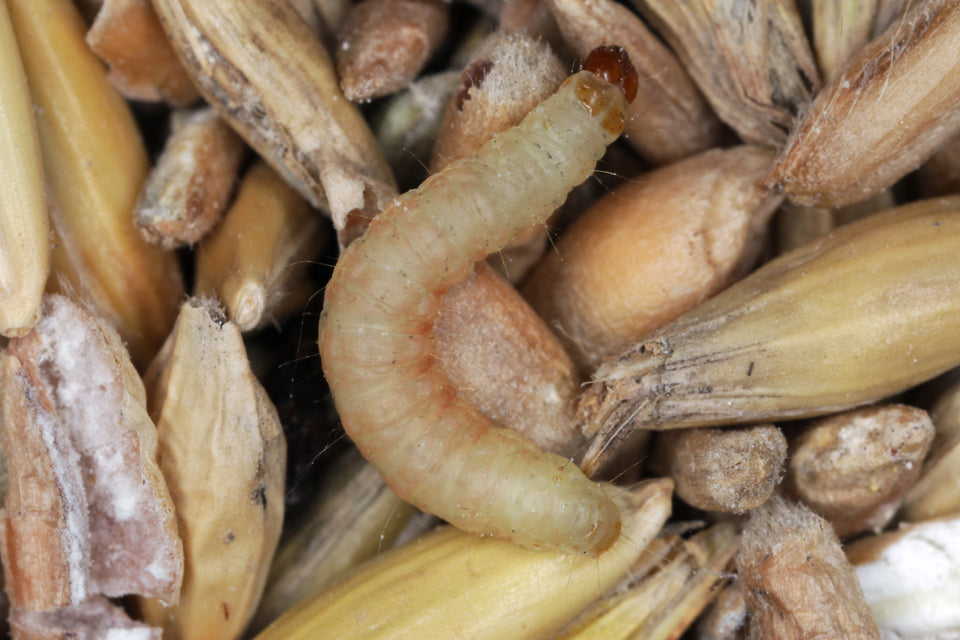How to Get Rid of Moths in Your Garage?

Need to get rid of moths in garage spaces? Here’s what to know!
Moths love quiet undisturbed places with plenty of nooks and crannies. Sheds, attics, and, yes, garages, are prime targets for Clothes, Carpet and Pantry Moths. This is especially true if you keep garments, rugs, dry goods, or certain other items of interest in these places!
Want to make sure your garage is moth free? Understanding moth habits, preferred food sources, and effective elimination techniques can help. Here, we'll answer the most frequently asked questions about Carpet Moths, Pantry Moths, and Clothes Moths, and discuss keeping them out of your garage for good. Before you know it, your garage can be pristine and moth-free!
How to get rid of moths in my garage?
If you want to get rid of moths in your garage, you have to understand three concepts:
Prevention, Elimination, and Deterrents.
Prevention
As they say, the best offense is a good defense. Prevention involves keeping moths out of your garage in the first place. Make sure that you inspect certain items before bringing them into your garage or home. For example, if you buy a used couch, make sure that it is free of moth eggs and moth larvae. Eggs and larvae are the sources of destruction from common Clothes and Carpet Moths.
If you can't be sure an item is free of eggs or larvae, spray it down with a moth-killing spray. For information about moth-killing solutions you may like to read our Clothes Moth Kit Guide, which gives you guidance about using chemical products for eliminating larger infestations in your home.
Or, you can freeze smaller items in the freezer for 72 hours.
Elimination

Elimination is necessary when an infestation is already present. Ergo, if you believe your garage is infested, you will need to deal with the moths and their offspring at every stage. Clothes Moth Larvae can live for up to 30 months, eating through your stored belongings.
To get rid of moths in a garage first it needs a thorough cleaning so that you can assess any damage and toss out the moth-damaged items that are beyond saving. Then position Clothes Moth Traps so that you can catch the adult males and help break the breeding cycle. Should you need to use fumigation, foggers, and sprays can help to get to those hard-to-reach places where moths can hide. Read more in our Clothes Moth Kit Guide, which gives you guidance about using chemical products in line with our Traps.
If you have a Pantry Moth infestation then place non toxic Pantry Moth Traps in areas where you have seen or suspect moths to be present.
Deterrents
Deterrents are the third step. After eliminating an infestation, deter moths from coming back with cedar and herbal sachets. Moth Traps can be very handy at this stage too because they catch the adult male moths and help break the breeding cycle. The goal is to prevent female Clothes, Carpet, or Pantry Moths from being attracted to laying eggs in your garage again.
Moth Elimination in Garages: Important Things to Need to Know Before You Start
Please keep in mind that moth bombs, fumigation, etc., must be done carefully. Here are some important things to know.
Moth Fumigation in Your Garage
Smoke fumigation should not be carried out in a garage where a car is being stored as the concentration of smoke might damage the car's electrical components.
Care should also be taken if fumigating where flammable liquids or oils are stored/used in a garage, as fumigation requires the use of a match to ignite!
Moth Aerosol Foggers in Your Garage
Fogging should not be carried out in a garage where a car is being stored as the concentration of aerosol liquid might damage the car's electrical components, bodywork, and unsealed surfaces.
Moths in the Garage: FAQs
Now, here are a few of the most frequently asked questions relating to moths in garage spaces. Read on to find answers to the moth-related questions that are troubling you the most!
What types of moths can infest a garage?

Some types of moths can be quite destructive to your belongings. Although small in stature, Carpet and Clothes Moths can unleash untold devastation within your garage. In the larval stage, both of these species of moths eat through animal based fibers, causing costly damage and massive headaches.
When it comes to damage to the items in your garage, Clothes Moths, Carpet Moths, and Pantry Moths are the most problematic. Carpet/Clothes Moth Larvae are the most damaging to your expensive belongings - are you storing any antique wool or silk carpets or boxes of woolen and cashmere clothing? Sometimes, Pantry Moths can be a problem as well, especially if you have food items stored in your car or food detritus from leftover snacks. Garden moths aren't usually an issue, and will usually only seek shelter in a garage temporarily.
What do Clothes, Pantry, and Carpet Moth Larvae eat in a garage?
Clothes and Carpet Moths are interested in eating naturally derived textiles like silk, wool, fur, leather, feathers, etc. If you have pets, any shed pet hair in your vehicle, on any stored items, or even in an old pet bed stored in the garage, may attract Clothes Moths to come and lay eggs.

In a garage, Pantry Moths are a concern if you have food items stored. Also, if your vehicle’s interior has been contaminated with animal fats, (like from eating in your car) Pantry Moths may infest your vehicle. Leaving food wrappings or contaminated food products in your car or storing them in the garage can be an issue as well.
How to get rid of Pantry Moths in the garage?
Pantry Moths (Indian Meal Moths) are usually interested in dry grain and cereal items like flour, rice, and open packets of bird seed. These items are often found in the pantry, hence the name "Pantry Moth".
Still, if you have food stored in your vehicle, closets, garage, or somewhere else in your home for any reason, Pantry Moths could become a problem. Generally, Pantry Moth Larvae will not damage the upholstery or materials. However, if there are lots of crumbs or food remnants ground into your upholstery, you may still wind up with some amount of material damage.
To get rid of Pantry Moths in the garage, first, remove all contaminated food sources. Then, you can proceed with moth-killing techniques such as fumigation or moth-killing sprays. After that, be sure to keep food items out of your garage and stored in sealed containers going forward. This will help to prevent re-infestation.
Finally, place Pantry Moth Traps to monitor for any further moth presence and use moth repellent sachets to keep moths from finding your garage a hospitable place to lay eggs.

What is the cause of moths in a garage?
Moths are caused by many things. If you suddenly start noticing moths in your home, it could be that a generation of hidden moth eggs have hatched, gone through the larval stages, and are now ready to find mates. Or, it may be that certain types of moths are attracted into your home looking for lights to flutter into.
It will all depend on the type of moth. Pantry Moths are often brought into the house (or garage) accidentally in the egg or larval stage via an infested grain/food item. Clothes Moths can be carried in on used furniture or clothing. Or, adult Clothes Moths could simply fly in through a window to lay eggs in your closet.
How to get rid of moths in yard areas?
If you notice moths in your yard, it could be a good thing. Especially if you see non-pest moths. However, if you want to keep the pest species of moths out of your yard, consider planting mint or lavender. Pestilent moths don't like these herbs! Other species of moths are great pollinators. So, if you have a garden, you will want to keep them around. You should also consider turning off bright lights at night, as some moths are attracted to lights.
How do I get rid of moths quickly?
Fumigation and moth-killing sprays are the quickest and most effective ways to eliminate moths. You can also freeze items to kill moth eggs or larvae. Regular cleaning and a thorough vacuum is also a good idea!
For more guidance about treating your home with chemical products in line with our Traps you may like to read our Clothes Moth Kit Guide. If treating a kitchen or pantry you can use a non toxic spray which is safe to use around food preparation areas. For information about non toxic treatments for your kitchen areas you may like to read our Pantry Moth Kits Guide.

What smells keep moths away?
Wondering what keeps moths away? Lavender, cedar, mint, and rosemary. Pest-species of moths don't like these scents, as they interfere with their pheromones! As a bonus, humans often enjoy the smells of these natural deterrents.
However if you are using Moth Traps then make sure these are not anywhere near your natural moth deterrents because they counteract each other.
How does vinegar get rid of moths?
Mix equal parts vinegar and water together. The acidic environment from this mix makes it hard for moth eggs and larvae to survive. Do take care because using white vinegar alone is too strong and can damage certain surfaces, such as metals, stone countertops, and hardwood floors.
About MothPrevention
MothPrevention® speak to customers every day about their clothes moth issues - clothes moths are a species that are ever increasing and that can cause significant damage to clothes, carpets and other home textiles.
To date, we’ve helped over 250,000 customers deal with their moth problems. We have developed professional grade solutions including proprietary pheromones and trap design, not available from anybody else in the USA.





